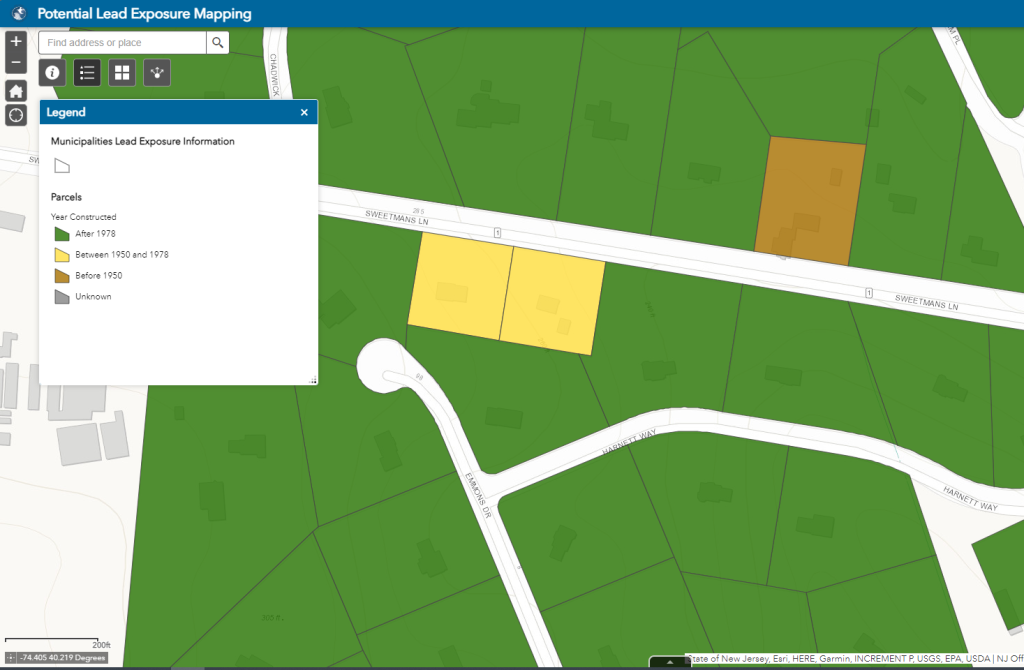Tom Neltner, Senior Director, Safer Chemicals Initiative and Roya Alkafaji, Manager, Healthy Communities
What Happened: The State of New Jersey published an interactive map showing potential sources of lead exposure for any given address in the state. Currently, the map specifically looks at lead-based paint in housing, though the State has plans to expand this to include other sources of lead, including drinking water from lead service lines (LSLs).
Why It Matters: The availability of address-specific information is important to engage residents, potential home buyers, and renters so they can make better informed decisions about protecting their families from harmful lead exposure. New Jersey is the first state to move beyond neighborhood-level mapping of lead risks to provide specific information about lead at the address level.
The map uses housing age as an indicator to assess risk to lead exposure, which is an excellent place to start because it is relevant to the prevalence of both lead-based paint and lead in drinking water.
As more information is added on lead pipes, lead-contaminated soil, and nearby commercial operations that release lead, as well as details on lead poisoning prevention requirements, the map will become a critical tool in the effort to comprehensively consider lead risks and drive exposure closer to zero.

Source: New Jersey Department of Environmental Protection Potential Lead Exposure Mapping (click on Lead-based paint tab at the top and zoom in until you see parcel-level detail with color overlays)
Our Take: The mapping project is another example of leadership on lead poisoning prevention by Governor Phil Murphy and his administration. We encourage the Governor to move quickly to the next phase of the project and add address-level information on LSLs. This data is readily available because New Jersey drinking water utilities submitted their initial service line material inventories to the Department of Environmental Protection in July 2022, with a requirement to update this inventory annually until all LSLs are replaced. Other states should consider adopting similar mapping projects to benefit their residents.
The Backstory: In 2019, Governor Murphy announced a comprehensive plan to reduce the risk of families’ lead exposure from lead-based paint, LSLs, and other sources. The plan directed specific actions by seven state agencies and puts public transparency and data at the forefront of agency efforts.
Pulling data sourced from New Jersey Departments of Community Affairs, Health, and Environmental Protection, the Potential Lead Exposure Mapping tool serves as an excellent foundation to increase transparency on various sources of lead exposure. The map is the powerful result of state agencies collaborating in useful ways that prioritize public health for New Jersey residents.
Go Deeper: Our Mapping Lead blog series highlights ways in which interactive, address-level maps help families and communities take action to reduce lead exposure. If you are interested in learning more about what a lead exposure map like New Jersey’s could look like in your community, take a look at existing maps like the HUD Deteriorated Paint Index, EPA EJ Screen, CEQ Climate and Economic Justice Screening Tool, and the Vox Lead Exposure Risk Map.
Revised May 2, 2023 to update blog series title and link.









